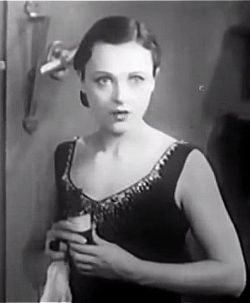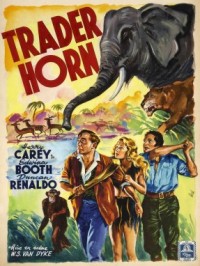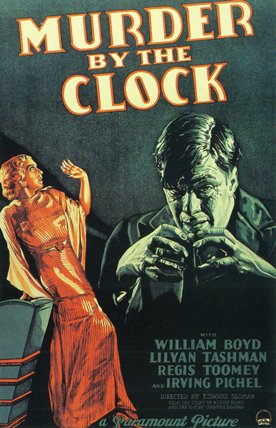‘Deadlegs’ Flint (Walter Huston) is a paraplegic who rules over a small area of the African jungle with a combination of cruelty and magic tricks. From there he plans various illegal schemes which are executed by his cowed henchmen Hogan (Mitchell Lewis) and Cookie (Forrester Harvey). He also keeps around sex toy Tula (Lupe Velez). All his substantial will is focused on revenge against Gregg Whitehall (C. Henry Gordon), who stole his wife and crippled him years ago, and it’s time to put the first part of that plan into action. He’s kept Whitehall’s daughter Ann (Virginia Bruce) in a convent school for years. Now he will drag her into the jungle and degrade her in every way imaginable before confronting her father. Entering into this hellhole is Kingsland (Conrad Nagel), drug-addled doctor, who falls for Ann while Flint forces him to stay for his own purposes.
Sadism, rape, whippings, incest, mental & physical abuse, drug addiction, alcoholism, forced alcoholism, prostitution, pimping you daughter, torture, and human sacrifice, and in 1932. I didn’t know they made them like this then. Hell, they never made them like this. Kongo is all things exploitation turned up to 11. It laughs at SAW and Hostel. It’s sleaze, but it’s sleaze elevated and perfected. There is no taunting or teasing. It lays it all out. No, we don’t need many films like this, but if we need one, this is it.
Kongo is often said to be a remake of Tod Browning’s 1928 silent West of Zanzibar, starring Lon Chaney, which is a partial truth. Both are based on the 1926 stage play Kongo, which starred Walter Huston (Virginia Bruce is often cited as being in it as well, but she’s not listed in the original cast). Browning’s version softened it, removing the drug references and making Flint—known as Phroso in that version—more sympathetic by adding an unnecessary opening, as well as slightly easing up on the abuse of the daughter. It’s a good movie, but Kongo is the real deal.
William Cowen’s career as a director was brief and otherwise not noteworthy, but he knew what to do with this material. His restraint is amazing. The story is over the top, the dialog extreme, and the acting drags you kicking and screaming into the film, so Cowen keeps the camera calm. He keeps the focus on character and avoids anything that could distract. He had a wonderfully lurid script filled with sharp cruel dialog and a cast that could project the nastiness involved so he got out of the way and let it happen. Sometimes that’s the best kind of direction.
I can’t praise the cast too highly. Each brings levels I didn’t expect. Perhaps most surprising is Conrad Nagel who is normally bland in early Hollywood bland leading man parts. Not here. He takes the character that could so easily have been overshadowed and gives him real depth. Kingsland’s romance with Ann is believable, perhaps because they walk through the abyss together. It’s actually quite heartwarming to see them still moving after all their suffering, and it helps that Kingsland isn’t simply a paragon of cinematic virtue; he’s a drug addict that has sex with Tula for a fix. Virginia Bruce is a revelation as well. I didn’t know she was capable of this. It’s her finest performance and it could easily have gone wrong. She walks a fine line between virtue and depravity. Ann is the victim, and Bruce never tries to hide that, but she plays it as more. She’s not just some thing to be rescued. She’s exhilarating. And of course there is Huston, a legend of ‘30s Hollywood, who owns Flint. He feels dangerous from the instant we meet him, and even more malevolent. It’s easy to hate him, yet I couldn’t help reveling in his vile actions.
Kongo is everything 1970s Euro-trash cult films promised but never seemed to deliver, in part because they were never made this well. Kongo is lewd and malignant and I could feel the sweat and filth and disease. If a film could infect you, this is it, and I loved it.











